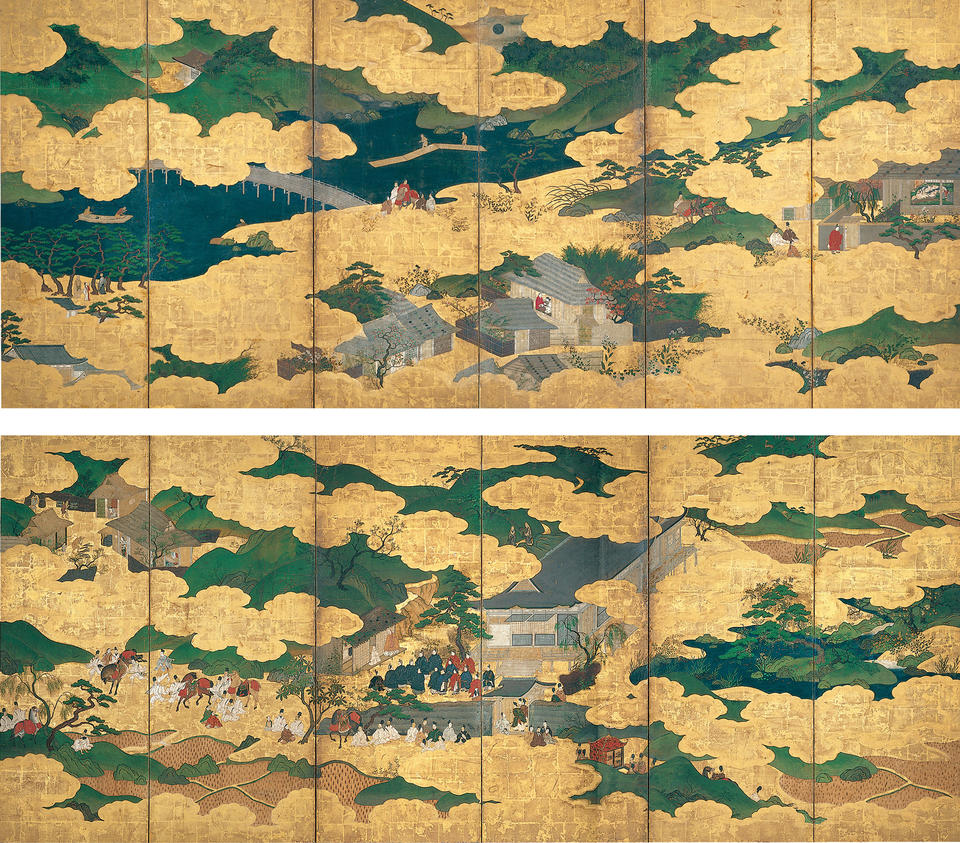Catalogue information
Edo period, first half of 17th century
Pair of six-panel folding screens; ink, color, and gold on gilded paper
Each screen 154.7 x 360.4 cm (60 7/8 in. x 11 ft. 9 7/8 in.)
Donated to The Metropolitan Museum of Art, New York by the Mary and Jackson Burke Foundation in 2015
Literature
Takeda Tsuneo 1980, nos. 84, 85 (“Goshirakawa’s Visit to Ōhara”)
; 1980
[Editor]. Shōheiga (Screen painting). Zaigai Nihon no shihō (Japanese art: Selections from Western collections), 4. Tokyo: Mainichi Shinbunsha.
Tokyo National Museum 1985a, no. 29
; 1985a
Nihon bijutsu meihin ten: New York Burke Collection / A Selection of Japanese Art from the Mary and Jackson Burke Collection. Exh. cat. Tokyo: Chunichi Shimbun.
Ford 1997, pp. 41–45
; 1997
“Tragic Heroines of the Heike monogatari and Their Representation in Japanese Screen Painting.” Orientations 28, no. 2 (February): 40–47.
Murase 2000, no. 111
; 2000
Bridge of Dreams: The Mary Griggs Burke Collection of Japanese Art. Exh. cat. New York: The Metropolitan Museum of Art.
Tsuji Nobuo et al. 2005, no. 73.
2005
Nyūyōku Bāku korekushon-ten: Nihon no bi sanzennen no kagayaki / Enduring Legacy of Japanese Art: The Mary Griggs Burke Collection. Exh. cat., Museum of Fine Arts, Gifu; Hiroshima Prefectural Museum of Art; Tokyo Metropolitan Art Museum; and Miho Museum, Shigaraki, Shiga Prefecture. [Tokyo]: Nihon Keizai Shinbunsha.
See also
- Japanese paintings » Screens by Unidentified Artists of the Momoyama and Edo Periods
- Screens
- Works of the Edo period
This artwork was published as catalogue entry 207 in Volume I of Art through a Lifetime.



